Hoochie Koochie Man
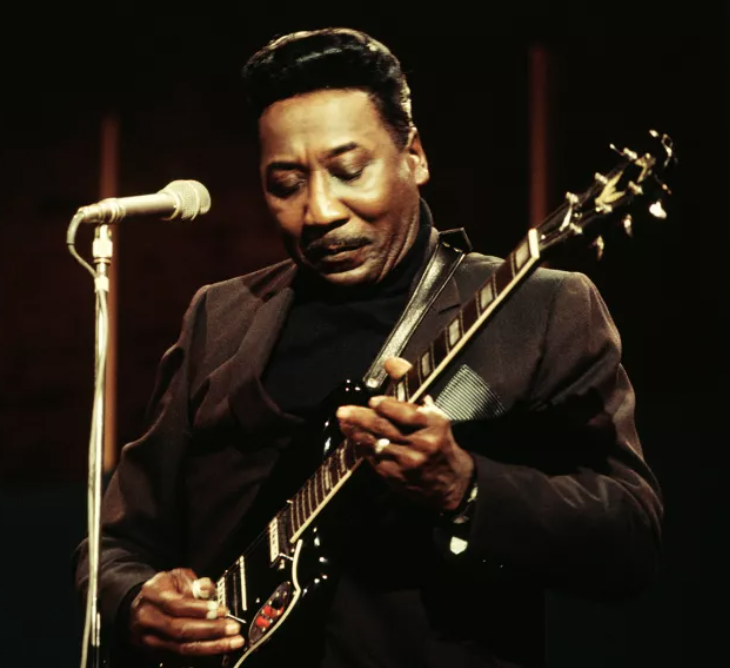 Image credit: David Redfern/Redferns
Image credit: David Redfern/Redferns
 Image credit: David Redfern/Redferns
Image credit: David Redfern/Redferns
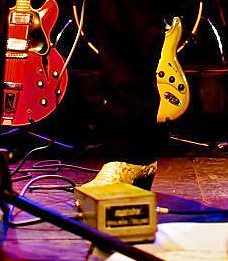
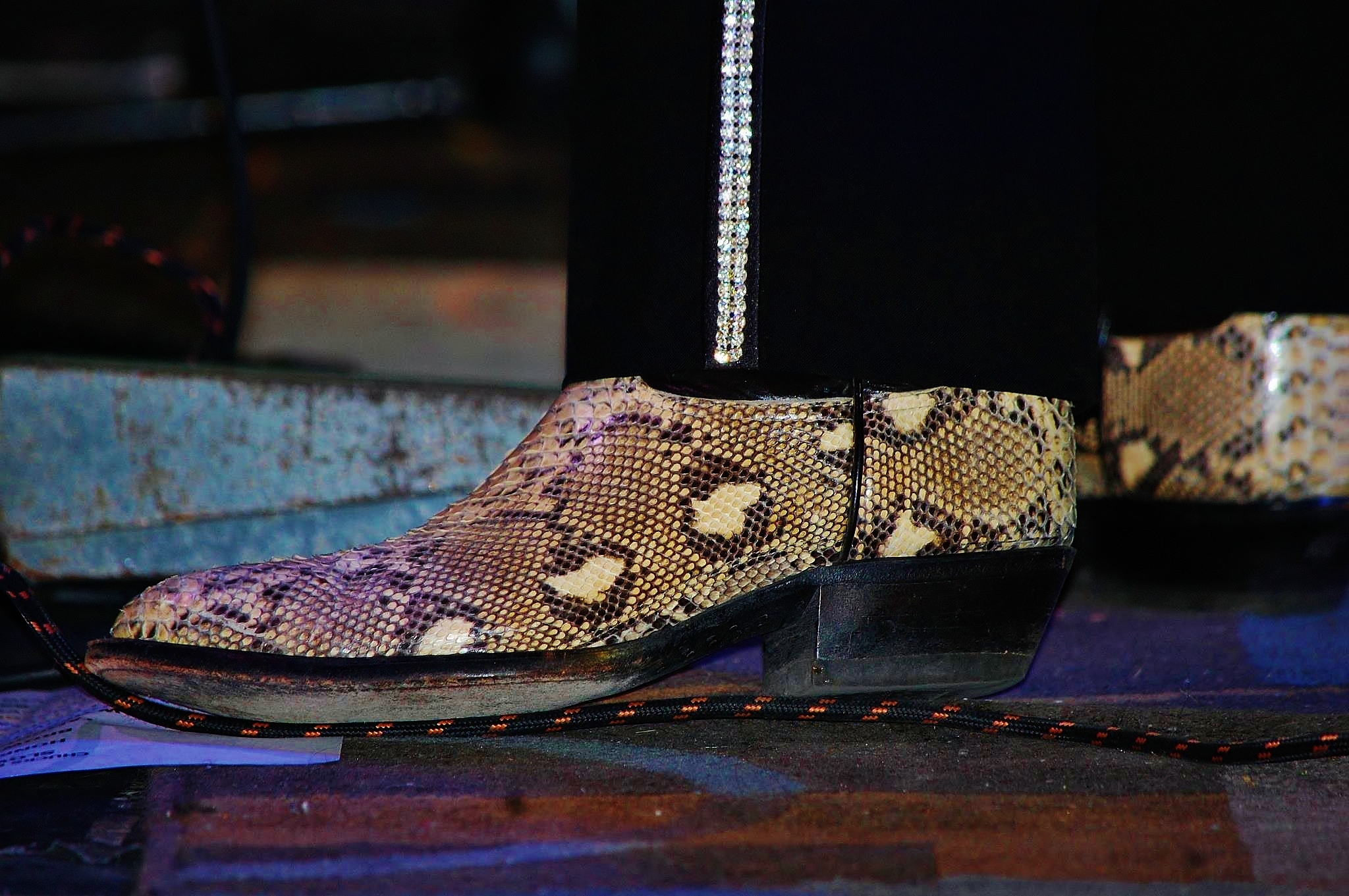
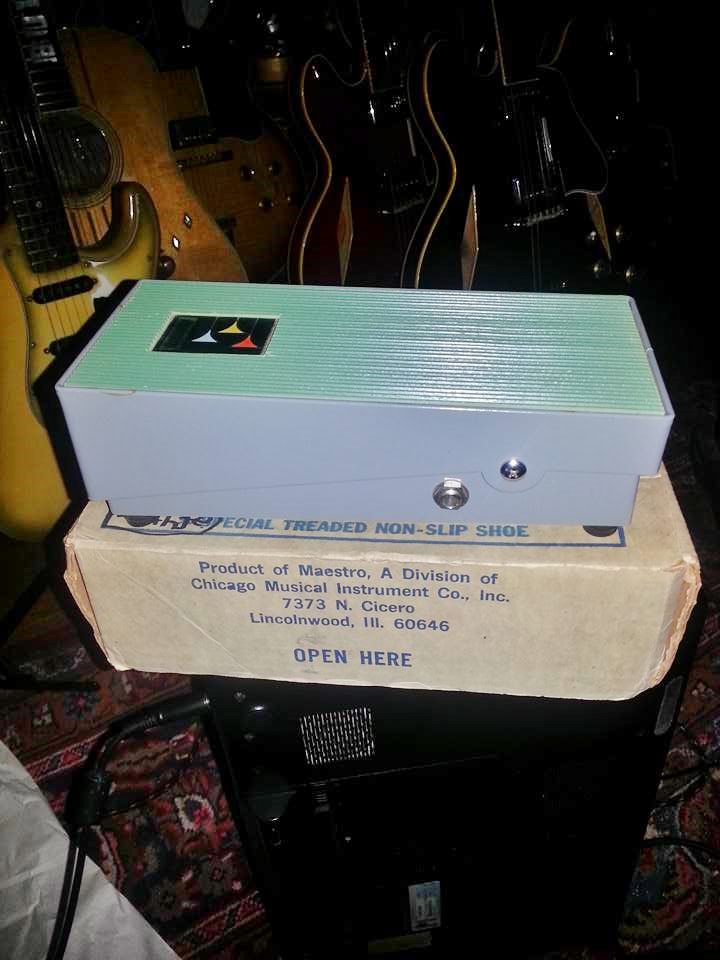


One of the joys of working with different artists and genres is the diversity of life experiences each artist brings to their music. Everyone has a different story to tell and a different point of view. When our music is filtered through our own lives, we can share those experiences with others and hopefully bring joy to someone. It is also interesting to observe how different artists celebrate holidays and other occasions throughout their lives.
One of my favorite type songs to record is a Christmas song. Every album that I do with a new artist, I like to suggest doing a Christmas song. The Christmas season is the most content starved season of the year, so there can never be too many Christmas songs. Working with Blues artist, Buddy Black was no exception. He accepted the suggestion of doing a Christmas song and wrote a heartfelt tribute to the holiday from the point of view of a country family that did not have much, but still had love and Christmas.
The Most Important Day of the Year was written and produced during the recording of an album of the same name. 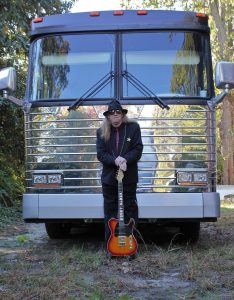 This album shows another side of the blues artist in that it represents his Carolina roots in the form of more traditional country. This style carried on into the Christmas song as well. Once Buddy had come up with the song, he recorded a vocal and acoustic guitar track in the studio. I then took the song and built a template for us to record the entire arrangement. This production process was a perfect blend of analog and acoustic with a modern film score work flow. Buddy black played all guitars, including a vintage lap steel, and I completed the rest of the arrangement. The background vocals were sung by Kim Fleming, and recorded in Nashville with Gabe Masterson engineering. Buddy and I also recorded a short scene as an introduction, complete with a fireplace, young child and a husband and wife trying to make ends meet. I don’t think Buddy or myself could be any more proud of the result. We hope The Most Important Day of the Year will be another family favorite Christmas song for years to come.
This album shows another side of the blues artist in that it represents his Carolina roots in the form of more traditional country. This style carried on into the Christmas song as well. Once Buddy had come up with the song, he recorded a vocal and acoustic guitar track in the studio. I then took the song and built a template for us to record the entire arrangement. This production process was a perfect blend of analog and acoustic with a modern film score work flow. Buddy black played all guitars, including a vintage lap steel, and I completed the rest of the arrangement. The background vocals were sung by Kim Fleming, and recorded in Nashville with Gabe Masterson engineering. Buddy and I also recorded a short scene as an introduction, complete with a fireplace, young child and a husband and wife trying to make ends meet. I don’t think Buddy or myself could be any more proud of the result. We hope The Most Important Day of the Year will be another family favorite Christmas song for years to come.
Related Articles:
A Country Christmas
A Night Before Christmas
CMA Country Christmas
1966 was a very good year for the guitar players that were looking for something different. Jordan electronics, a subsidiary of Victoreen, a company built on their line of geiger counters, was formed to make instrument amplifiers and guitar effects. Victoreen’s motto was “The Worlds First Nuclear Company” Boss Tone was their biggest success in the guitar effect area. They had already made a line of solid state amps that were referred to by most reviewers only as LOUD!
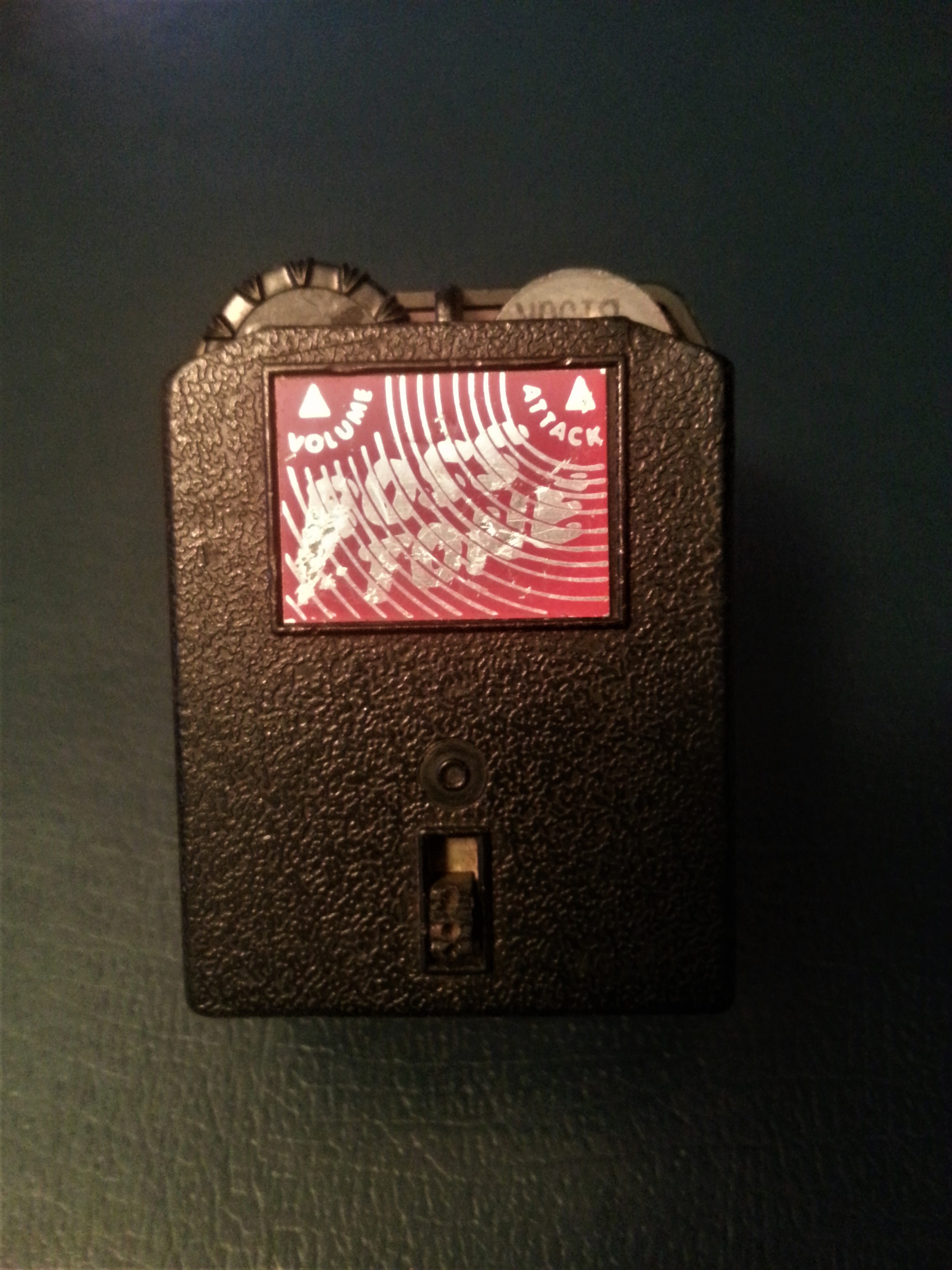
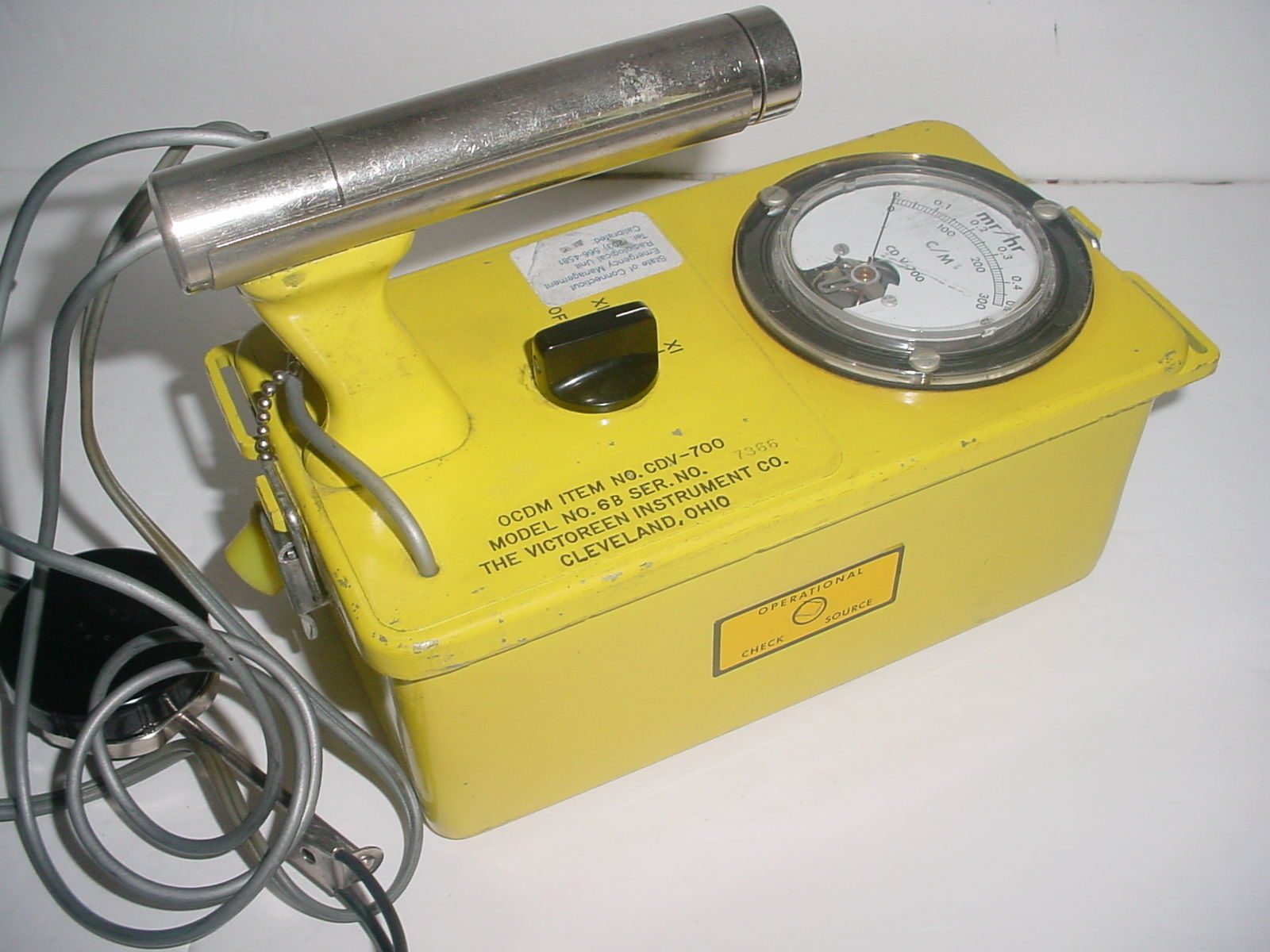
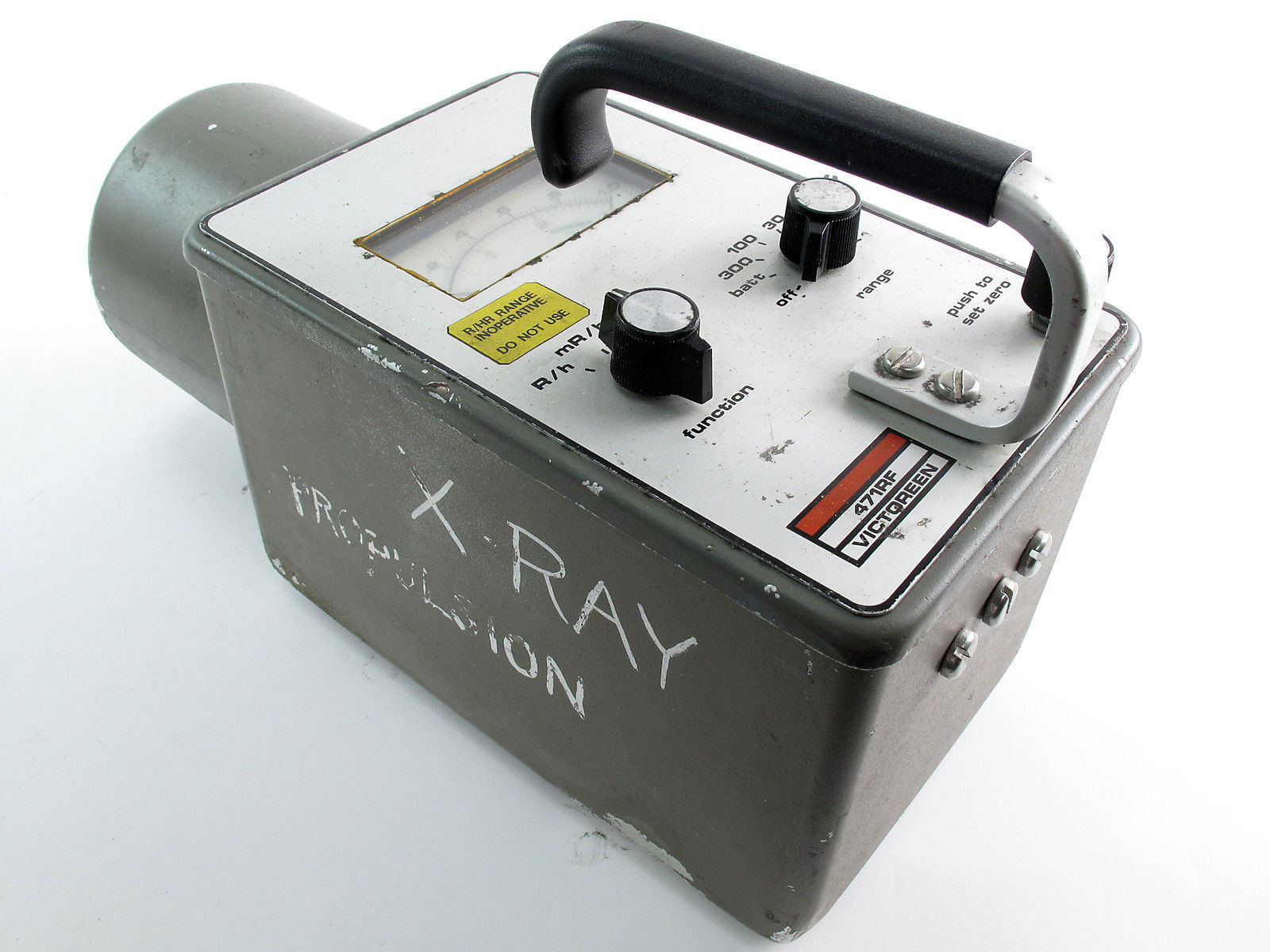
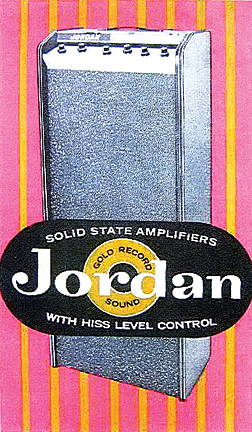
The first model has the Alhambra, California address on the back. Early in their production the company moved to Pasadena and that address was stamped on the back through the end of manufacture, approx. 1970. It was a simple design using 2 transistors. One as a voltage gate and the other as a buffer. Only a fraction of the size of the other distortion effects on the market and priced to sell at $29.95. No consideration was made for the popular guitar, Fender Stratocaster, as it plugged directly into the 1/4″ guitar jack and Fender had a recessed output. It have no shielding, so many times they were the source for a local radio station bleeding through an amp. What they did better than the others was manufacture true colorful distortion. When properly adjusted, there was nothing on the market that came close. Fat, smooth overdrive that was attached to the guitar so it was easily accessible to the player. Boss Tone became a must have for pedal steel players. Shot Jackson and Buddy Emmons licensed a version called Sho-Bud Boss Tone. Look carefully at your favorite Nashville type pedal steel player’s rig and you will most likely see one plugged into the output jack!
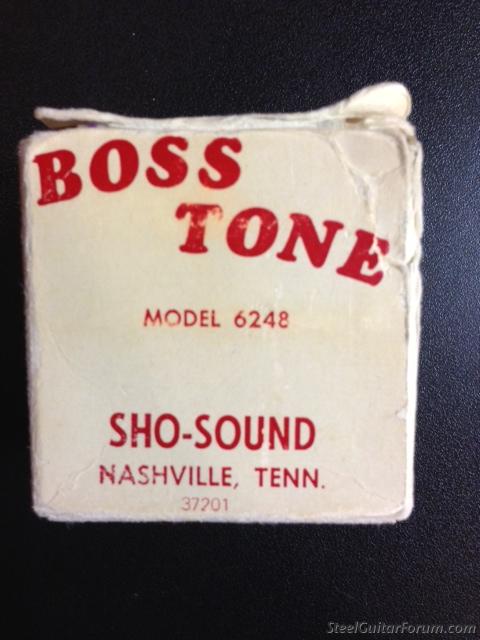

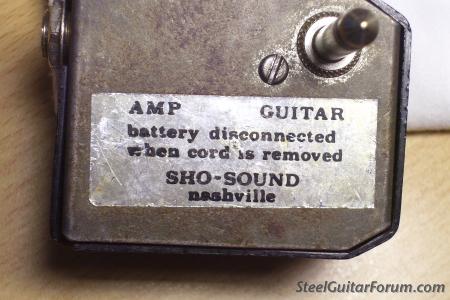

Dan Auerbach of the Black Keys uses a Boss Tone. Randy California of Spirit wouldn’t leave home without his. It’s rumored it was in his pocket when he drowned. You can hear it in the first 4 Spriit albums. Many have been converted to a floor pedal and have shielding added. It seems the Stratocaster players don’t want to be left out! The first version had a green circuit board, used a transistor made by Motorolla and has a more aggressive fuzz than the subsequent model with a brown circuit board. All versions are awesome but the green board version is highly sought after.
Related Articles:
According to the 1959 price guide and my copy of the 1960 Gibson catalog, the model of guitar commonly referred to as Les Paul Special, was actually the first SG. The double cutaway instrument was the same thickness as the Les Paul standard but with a non carved top. They are flat on the top and bottom. I have seen examples from as early as 1958. Single coil P-90 pickups were installed and they are mostly found in limed finish and cherry red. Gibson is known for it’s lack of dedication to consistency, so I expect there could be some examples of other colors out there. There were a few states of these fine Gibson thick body SG guitars.
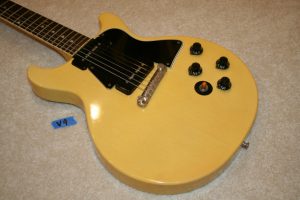 The first Gibson thick body SG had a large neck profile, body-neck joint at the end of the finger board and the selector switch above the volume and tone knobs. The neck pickup was about 1/4″ from the end of the body and the bridge pickup was also close to the angled stop tailpiece bar type bridge. The intonation was only adjustable on each end of the bridge. This worked surprisingly well however and the solid connection between the bridge and body make them sing. All I have picked up so far had pretty hot pickups.
The first Gibson thick body SG had a large neck profile, body-neck joint at the end of the finger board and the selector switch above the volume and tone knobs. The neck pickup was about 1/4″ from the end of the body and the bridge pickup was also close to the angled stop tailpiece bar type bridge. The intonation was only adjustable on each end of the bridge. This worked surprisingly well however and the solid connection between the bridge and body make them sing. All I have picked up so far had pretty hot pickups.
 The second version had a little thinner neck. The pickup selector was moved to the area that became the standard for subsequent models. It was now in front of the volume controls adjacent to the pick guard. All I have seen of this version have a serial number that begins with 9, then a space followed by the rest of the digits. The neck joins the body the same way as the first version with the bridge pickup still very close to the end of the body. Both of these first versions had a high percentage of failure. There was simply not enough wood left in that area. Many have had repairs.
The second version had a little thinner neck. The pickup selector was moved to the area that became the standard for subsequent models. It was now in front of the volume controls adjacent to the pick guard. All I have seen of this version have a serial number that begins with 9, then a space followed by the rest of the digits. The neck joins the body the same way as the first version with the bridge pickup still very close to the end of the body. Both of these first versions had a high percentage of failure. There was simply not enough wood left in that area. Many have had repairs.
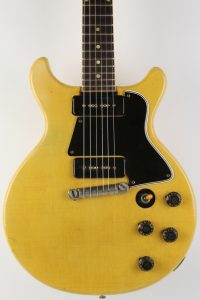 The next version of the Gibson thick body SG seems to have happened around 1960. The neck was moved into the body and joins at the 22nd fret. They had similar spacing for the neck pickup, about 1/4″ from the end of the fret board. This neck profile is my personal favorite. Thin and wide. Serial numbers were ink stamped like the earlier models with a 0, a space, then the rest of the numbers.
The next version of the Gibson thick body SG seems to have happened around 1960. The neck was moved into the body and joins at the 22nd fret. They had similar spacing for the neck pickup, about 1/4″ from the end of the fret board. This neck profile is my personal favorite. Thin and wide. Serial numbers were ink stamped like the earlier models with a 0, a space, then the rest of the numbers.
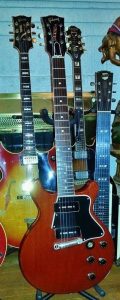
Version 4 was exactly like the previous one except the neck pickup was moved a little further, approximately 1″ from the fret board. They used that spacing through the production of Gibson thick body SGs.
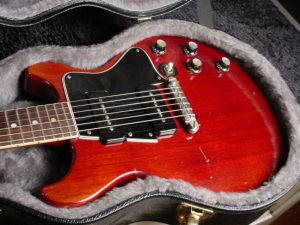 The last change to the Gibson thick body SG before extinction was moving the stop tailpiece anchors in line with each other and using a compensated bridge. All I have seen of those had pressure stamped serial numbers and were made 1961 on. The latest one I have seen was 1963.
The last change to the Gibson thick body SG before extinction was moving the stop tailpiece anchors in line with each other and using a compensated bridge. All I have seen of those had pressure stamped serial numbers and were made 1961 on. The latest one I have seen was 1963.
Related articles:
Related Links:
In 1985 Gibson commissioned Korea based Samick Guitar builders to begin making a few models under the Epiphone trademark, moving their manufacture from Matsumoku Japan. The most popular of them was the Sheraton II. A run of about 50 were made with the first version of lettering on the headstocks. These were premium quality instruments but the logos were a bit unrefined. Buddy Black has been searching the world for these rarest of the Sheratons and as of this writing has found and purchased 2. Buddy says, “I would have loved to have been in the Gibson board room when the Samick representatives walked in with the first ones. Not sure if there was laughter involved, but I expect they left with urgency to make a more acceptable model!!” There were at least 2 more subsequent states of headstock lettering that were increasingly better refined. All of the Korean made Sheratons are examples of superior fit and finish. They play like a dream with very low action. The frets are smooth as silk, binding is nearly perfect and the paint is as well masked and applied as anything Gibson ever did. They mirrored the upscale combination of mother of pearl and abalone position markers used in the 50’s and 60’s models. 5 layer binding around the neck and headstock and 6 layer around the top. Those were accented by a thin layer of black between the binding and the body color. As in the better Gibson models, they have binding nibs at the fret ends. They even bound the f-holes! About 1989 Samick changed the headstock logo to only Epiphone, with Gibson etched into the truss rod covers. The gold plating is as sturdy as Gibson. All said, they are some FINE guitars.
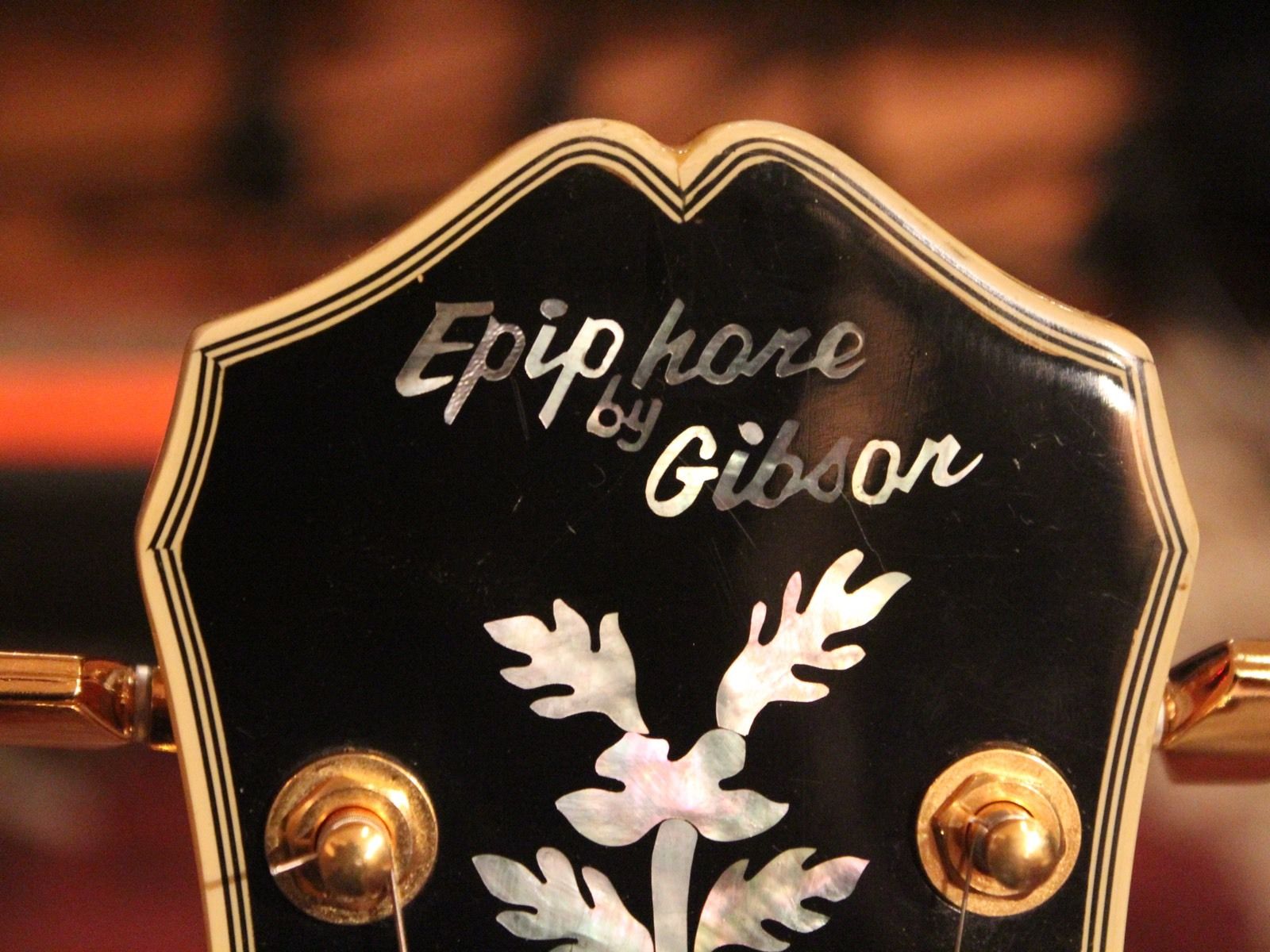
Epiphone First State
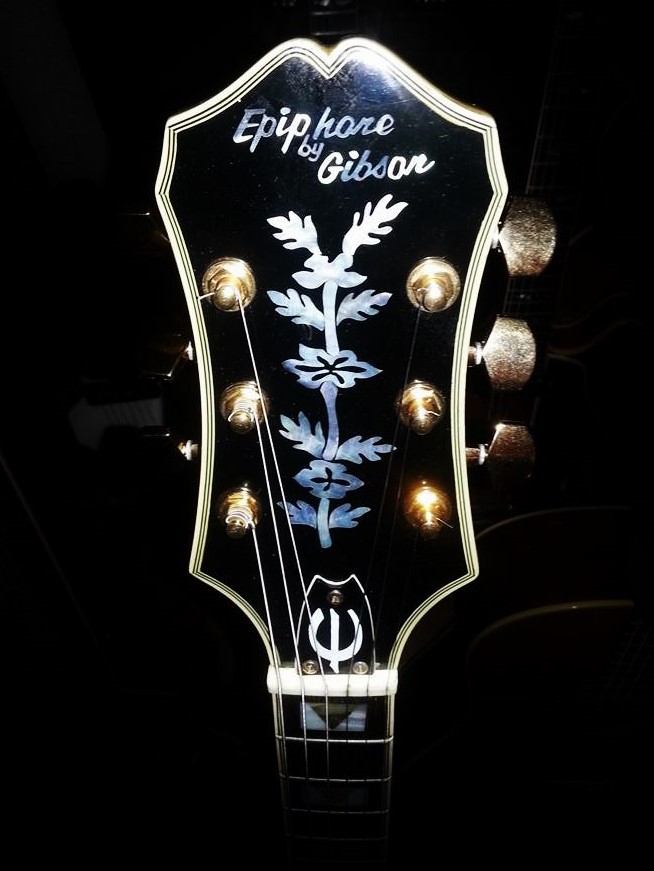
Epiphone First State

Epiphone Second State

Epiphone Final State
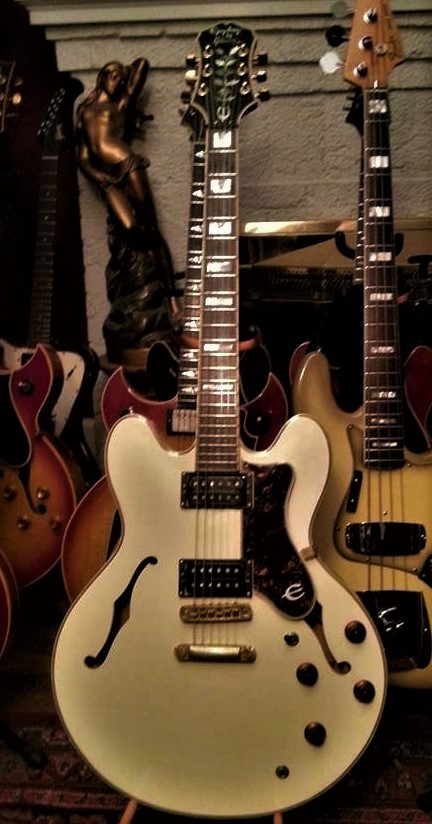
Rare White Epiphone
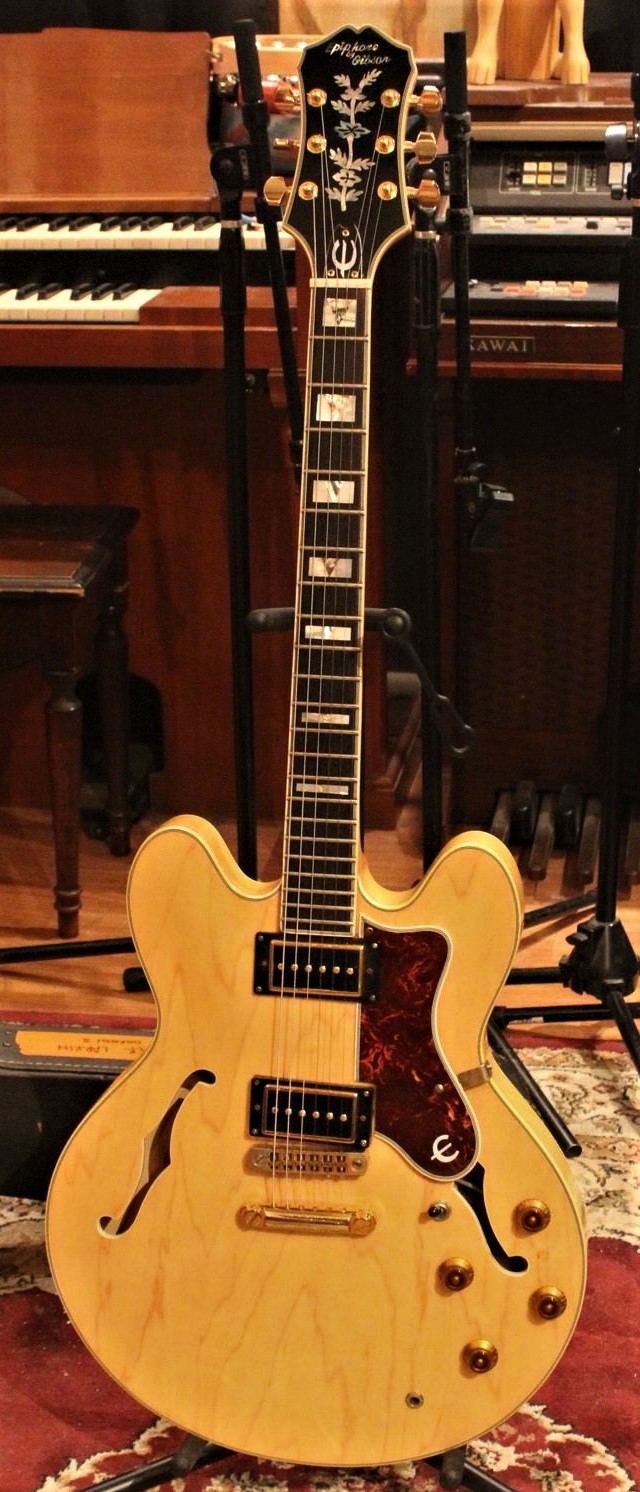
Natural First State Epiphone
R
Recent Comments